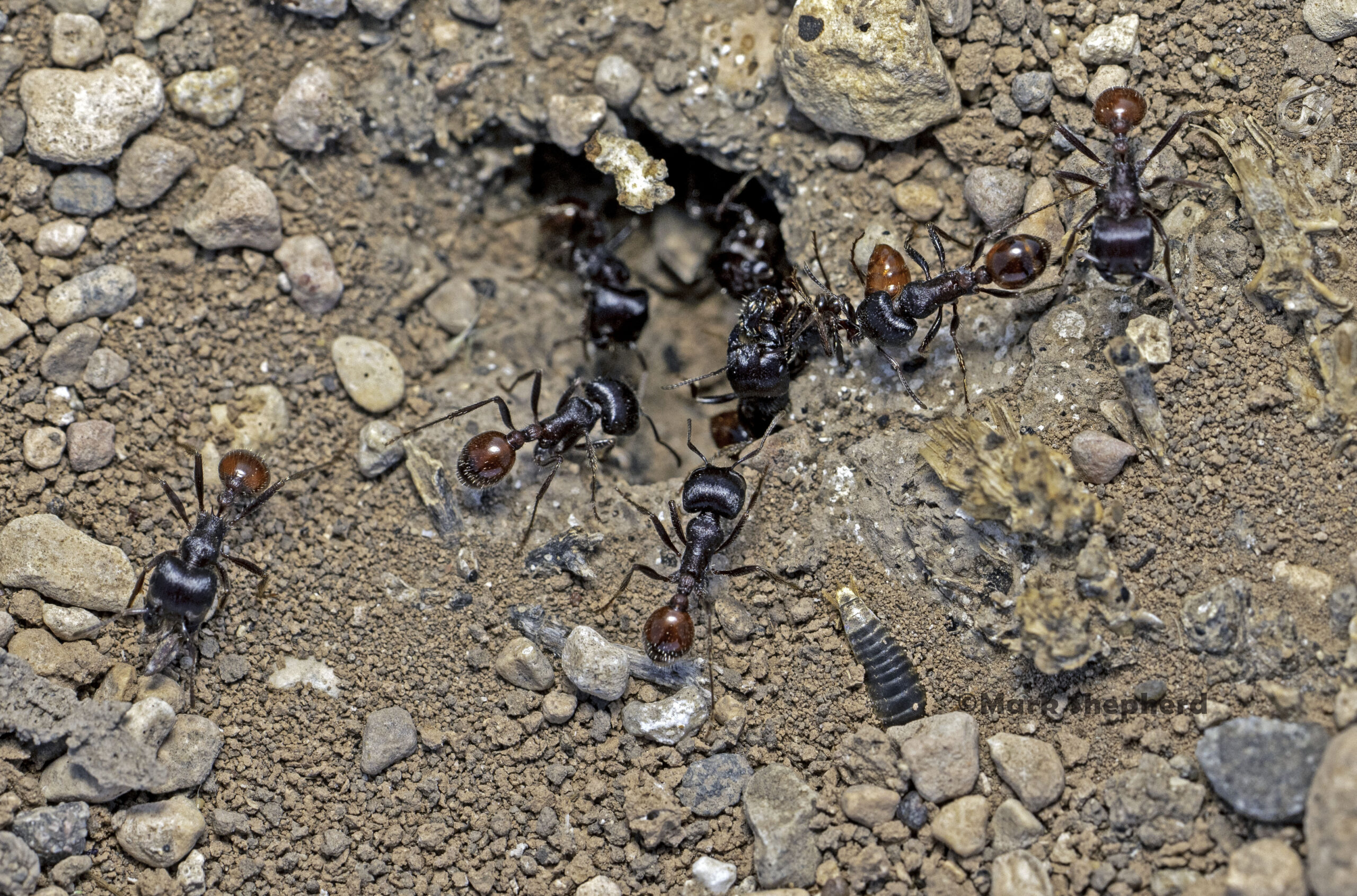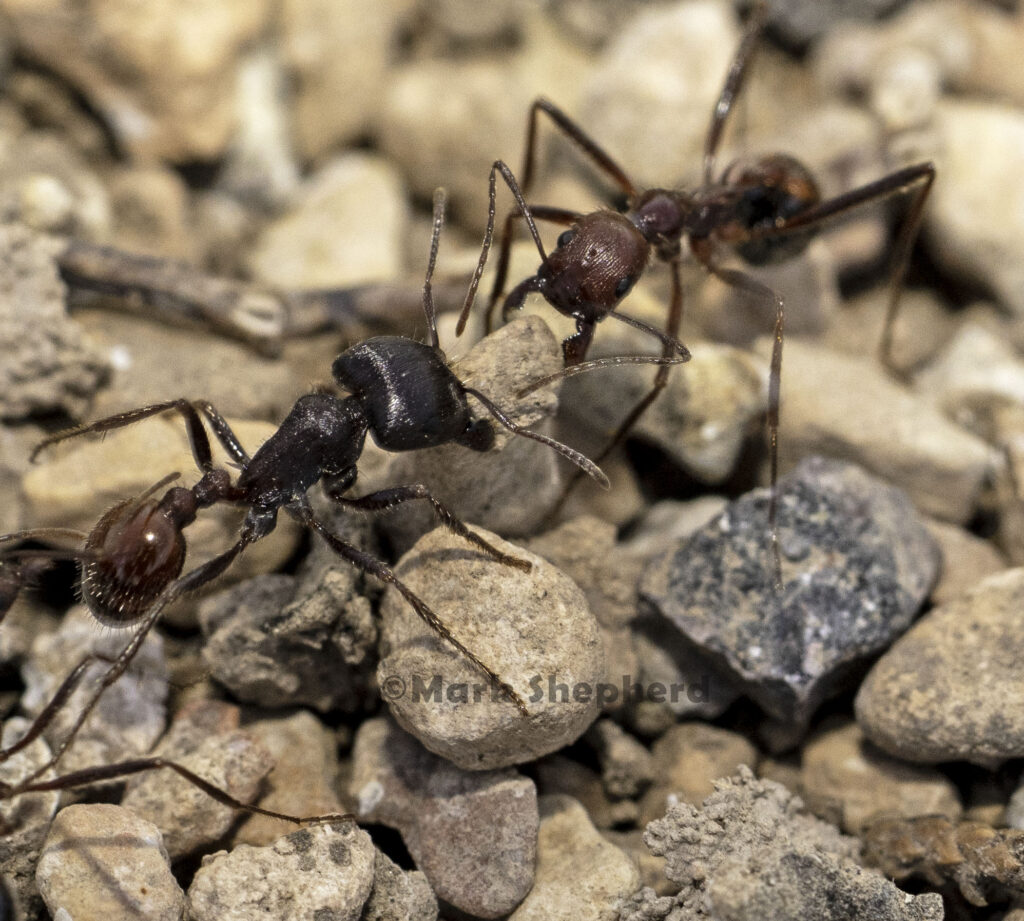
Desert Ecology of Red Harvester Ants
The Chinati Mountains State Natural Area is one of several new Texas parks that is in the final stages of development. The park is not yet open to the public and has not yet been developed. As such, it offers a rare opportunity to conduct before-and-after research on the effect that hiking and biking trails have on ant populations. Specifically, Pogonomyrmex barbatus ants have been reported to prefer nesting near hiking trails. My research seeks to monitor temporal changes in the number of P. barbatus nests before and after the establishment and use of hiking and biking trails.

Novomessor cockerelli is another seed collecting competitor species frequently found in close proximity red harvester ants. While N. Cockerelli is a sympatric competitor, the frequency with which they are found together may indicate a symbiotic relationship. In areas where Novomessor cockerelli ants nest in proximity to red harvester ants (Pogonomyrmex cockerelli) competition for food has led to the unusual behavior of nest plugging. Both ant species collect seeds, plant material and other insects and both are active in the morning and evening, when the daytime heat is lower. N. Cockerelli ants emerge from the nest earlier, collect stones and use them to plug the nest entrances of P. barbatus. This is reported to give N. Cockerelli workers more time to forage, while the red harvester ants are unplugging the nest entrance.
